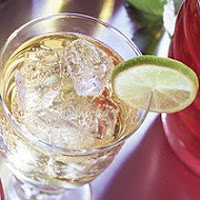1 pint ripe cherry tomatoes
1/3 cup sunflower seeds, soaked for at least 3 hours
3/4 cup walnuts, soaked for at least 3 hours
1 tbs minced shallot
1 fat garlic clove
1 1/2 tsp dried tarragon
2 tsp curry powder (or yellow curry)
1 tsp sea salt
pinch of ground nutmeg
pinch of cayenne pepper
a few turns freshly ground pepper
2 tbs flax seed oil or other
1/8 cup cold water
Optional garnishes: extra curry powder, chopped fresh tarragon leaves or thyme leaves, black lava sea salt.
Slice off the tops of the cherry tomatoes. With a melon baller, carefully scoop out the seeds and inner membrane. Slice a thin sliver off the bottoms so that they will become stable and not roll around. Be careful not to cut off too much or you’ll have a hollow tomato. Set them aside while preparing the pâte.
Add all other ingredients, except for the water, to a food processor and blitz until you get a hummus-like texture and not too smooth. Taste to adjust seasonings if necessary. Blitz again while drizzling in only enough cold water to smooth out the mixture until creamy.
When you stuff the tomatoes, it’s best to use a rounded 1/2 teaspoon measuring spoon, or a melon baller, along with something to help scrape it off. If you’re using the lettuce garnish, line the inside of each tomato with a small piece of lettuce leaf. Scoop in 1 to 2 rounded teaspoons of pâte depending on the size of the tomato.
Arrange on a serving platter and finish with an additional sprinkling of curry powder, some chopped fresh tarragon or thyme, and/or a sprinkling of black lava sea salt.

